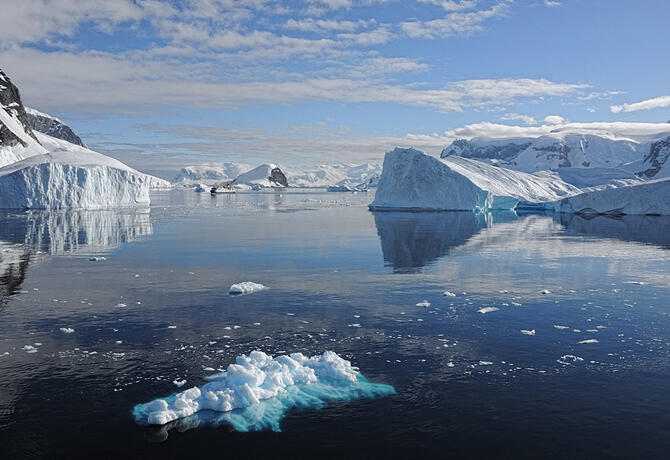A research group led by Associate Professor Ryuho Kataoka of the Space and Upper Atmospheric Science Group, National Institute of Polar Research, has developed a new correction method for temperature and snow cover effects appearing in muon and neutron measurements using cosmic ray observation data from Syowa Station in Antarctica.

Changes in the intensity of cosmic rays associated with solar activity are minor, but the two types of secondary cosmic rays (neutrons and muons) observed at Syowa Station are affected by the atmosphere and snow cover, and their count rates change significantly. If a set of temperature and snow cover data were constantly observed, the effects of the atmosphere and snow cover could be removed using physical methods, but meteorological data is not always available.
The research group wondered if the use of ever-present weather data and machine learning could provide corrections with comparable results to physical methods. In the muon observation data (corrected for atmospheric pressure effects) at Syowa Station, the muon count rate is inversely correlated with stratospheric (150 hPa to 20 hPa) temperature due to temperature effects. Therefore, using temperature data, the researchers conducted machine learning (Echo State Network) using temperature as input data and count rate as output data, and found that a similar correction could be made.
Next, it became clear from the neutron observation data that the count rate changed in negative correlation with the amount of snow. This indicates that the "snow cover effect" has a significant impact. To calculate this effect, they developed a physical model that can reproduce the change in the neutron count rate due to ground water content in proportion to the amount of snow cover using the PARMA model for calculating cosmic ray intensity in the atmosphere and actual snow cover data. They also found that a machine-learning method using air temperatures similar to the muon air temperature correction can also correct for snow effects.
The results of this research are expected to make it possible to diagnose the space environment from precise measurements of cosmic rays that fluctuate under the influence of space weather phenomena associated with solar flares.
"The next few years will be a period of high solar activity," said Kataoka. "In 2024, we plan to double the number of muon meters at Syowa Station to increase sensitivity. Using the research results as a foundation, precise measurements of cosmic ray fluctuations in various parts of the world can be used to calculate back the state of space between the sun and the earth due to the effects of solar flares and other phenomena, and strong magnetic fields that cause intense aurora activity, so it is also possible to detect clusters of strong magnetic fields that cause intense auroral activity in advance. As one of the axes of the new Antarctic priority research observations that began this fiscal year, we are also considering using these kinds of observations for space weather forecasting."
This article has been translated by JST with permission from The Science News Ltd. (https://sci-news.co.jp/). Unauthorized reproduction of the article and photographs is prohibited.




